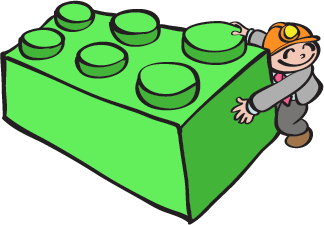Geometry Introduction
After years of intensive schooling, months of nonstop studying, and hours of excruciating exams, you've finally done it. You're a licensed architect. Congratulations!
Your family and friends are overjoyed by your accomplishment (as they should be!) and promise to take you out to a fancy dinner to celebrate. After all the studying you've done, you don't care if the fancy dinner is Taco Bell as long as it's not Top Ramen for the millionth time. Your parents insist on a four-star restaurant anyway, so you all dress up in suits and ties and get ready for a night on the town.
The restaurant has classical music playing in the background, maître d's in bowties, and those fancy cloth things called napkins that you've completely forgotten about. After the waiter takes everyone's order, your friends and family hold up their glasses to toast your success, but instead begin to chant, "Speech! Speech!"
Uh oh. You haven't thought of anything other than your exams for the past six months—not to mention the fact that you haven't slept a wink in the past 72 hours—and now you're expected to make a speech?
You start off coherent, thanking them for their unending support, but eventually descend into a garbled stream-of-consciousness about how much you loved playing Legos when you were young. It's all because of Legos. You couldn't have done it without Legos. Thanks to Legos, you're an architect. Seriously, how many times can you say Legos in under a minute?
Honestly, though, it's for a good reason. Sure, Legos are the bomb, but they're also why you wanted to become an architect in the first place. They're the building blocks of your childhood and your career…both literally and figuratively.

Just the same, everything in Euclidean geometry (which is what we'll be focusing on, primarily) is built on points, lines, and planes. Without them, geometry as we know it wouldn't be possible.
We'll throw in some angles and algebra just to make things interesting, but these "undefined terms" really are the essential building blocks of geometry. Play around with points, lines, and planes for a bit, and you'll be earning your architect's license before you can (figure out how to) say, "Balustrade."